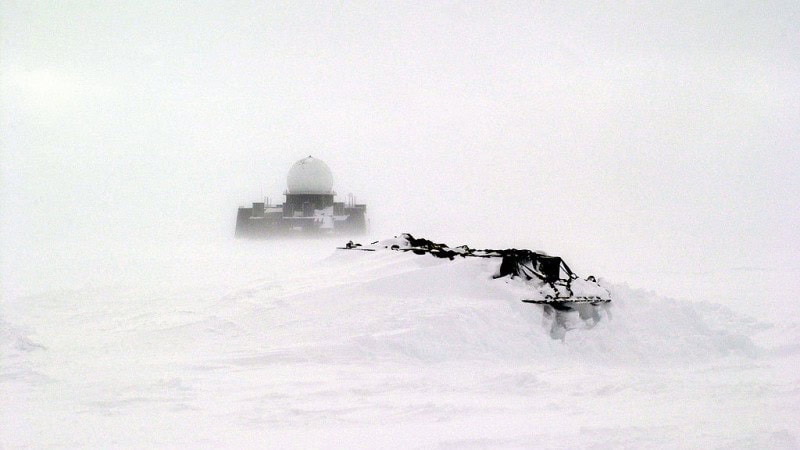
In the desolate expanse of Greenland’s ice sheet, a forgotten Cold War outpost emerged from obscurity this past April, revealed by a chance encounter with cutting-edge radar technology. NASA scientists, flying a Gulfstream III to test a new radar system, stumbled upon Camp Century—a once-secret U.S. military base buried deep beneath the ice.
“We were looking for the bed of the ice, and out pops Camp Century,” said Alex Gardner, a cryospheric scientist at NASA’s Jet Propulsion Laboratory (JPL). “We didn’t know what it was at first.”
A City Under Ice

Camp Century, often dubbed the “city under the ice,” was an audacious Cold War experiment. Built in 1959 by the U.S. Army Corps of Engineers, the base featured tunnels carved directly into the Greenland ice sheet. At its peak, it housed 200 soldiers and operated as a research hub—and as a potential launch site for Project Iceworm, a covert plan to station nuclear missiles within 2,500 miles of tunnels aimed at the Soviet Union. This vast network of underground tunnels was supposed to survive a first strike nuclear attack.

Temperatures at Camp Century could plummet to -70°F (-57°C), and winds often surpassed 120 miles per hour. Despite these brutal conditions, the base’s engineers designed an underground network with living quarters, laboratories, and even a nuclear reactor. Yet, the ice proved relentless. By 1967, shifting and accumulating snow forced the U.S. to abandon the site, leaving behind not only structures but also hazardous waste, including radioactive materials and fuel.
A Surprising Discovery

NASA’s April 2024 flight commenced with a totally different mission in mind. The mission’s goal was to test the capabilities of the Uninhabited Aerial Vehicle Synthetic Aperture Radar (UAVSAR), a system designed to map the ice sheet’s internal layers and bedrock interface. Unlike earlier radar systems that can only produce 2D maps of what’s immediately beneath the instrument, UAVSAR scans with added dimensionality (below and to the sides), providing clearer and more detailed images of subsurface structures.
In the radar’s crisp new view, Camp Century’s tunnels and facilities appeared more distinct than ever. Comparing the radar map with historical layouts of the base, scientists confirmed the alignment of parallel structures—revealing a glimpse of the city buried under 100 feet of ice.
“In the new data, individual structures in the secret city are visible in a way that they’ve never been seen before,” said Chad Greene, another JPL cryospheric scientist on the mission.
Cold War and Hot Climate
While Camp Century might seem like a relic frozen in time, it poses a looming threat. Greenland’s ice sheet is melting at alarming rates due to climate change, and scientists warn that buried contaminants could eventually surface. Radioactive waste, chemicals, and biological material left behind by the base might enter the environment if the ice thins enough to expose the site.
In 2017, the U.S. acknowledged these risks, vowing to work with Denmark and Greenland to address Camp Century’s hazardous legacy. A recent study found “a nontrivial quantity” of cancer-causing PCBs at Camp Century, along with large volumes of diesel and previously acknowledged nuclear waste.
For now, though, the base offers a stark reminder of the Cold War’s unseen environmental footprint—and a grim warning about the future.
“Without detailed knowledge of ice thickness, it is impossible to know how the ice sheets will respond to rapidly warming oceans and atmosphere, greatly limiting our ability to project rates of sea level rise,” said Gardner. The data collected during the mission will help refine models of ice behavior, aiding scientists in predicting sea level changes worldwide.
Today, Camp Century is like a frozen time capsule, holding lessons for the present and the future. The soil cores extracted from the base decades ago continue to provide clues about Earth’s ancient climate, helping researchers understand how the planet might evolve under modern environmental pressures.
Now, this accidental rediscovery underscores the power and fragility of Greenland’s mighty yet crumbling ice sheets. As the ice around Camp Century melts, what else might resurface from the depths of history?









